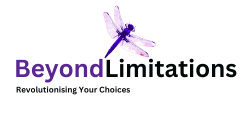The Avoidance Loop

In order to quieten our Unconscious Mind Loss Loop and to justify our beyond loss tactics, we can create the Avoidance Loop.
The avoidance loop involves a recurring pattern of negative self-talk and thought patterns that can keep you stuck in a cycle of avoidance and emotional distress.
Some of the common statements within this loop are:
- “This is too hard”: This statement reflects a feeling of being overwhelmed by the grief and challenges associated with loss. It can lead to avoidance behaviours as you try to escape the difficulty of processing your emotions.
- “I can’t get out of bed”: This phrase signifies a deep sense of sadness and emotional exhaustion. It’s a common manifestation of depression and can lead to isolation and a lack of engagement with life.
- “What’s the point of living”: This question reflects a sense of hopelessness and existential despair. When you are in the avoidance loop you may question the meaning and purpose of life due to the overwhelming emotional pain you’re experiencing.
- “No one gets me”: Feeling misunderstood or isolated in grief can reinforce the avoidance loop. Believing that no one understands can lead to further withdrawal from social support and connection.
- “I’ll never be successful in [insert your area of life]”: This statement reflects a negative and defeatist mindset. Grief can lead to self-doubt and many individuals may convince themselves that they’ll never achieve success or happiness in various aspects of life, contributing to avoidance.
- “Nothing matters anymore”: This belief can stem from the profound sense of loss and emotional numbness. It can lead to disengagement from your interests, responsibilities and relationships.
The avoidance loop is characterised by a cycle of these negative thoughts and feelings, which reinforce each other and make it difficult to move forward in the grieving process. These thoughts often feed into avoidance behaviours.
Recognising and challenging these negative thought patterns is a crucial step in transitioning from avoidance to active grieving.
As breaking out of the Avoidance Loop typically requires self-awareness, support from others and professional guidance, we will delve into the main eight avoidvance tactics over the next eight posts.
In the meantime, look at the six statements bove and look at when you had these thoughts and feelings.
Until we meet again, please remember that you are Simply the BEST!
Karen and Lesley
#GriefJourney #BreakTheAvoidanceLoop #EmotionalWellbeing: #SupportAndHealing #YouAreTheBest



Leave a Reply
Want to join the discussion?Feel free to contribute!